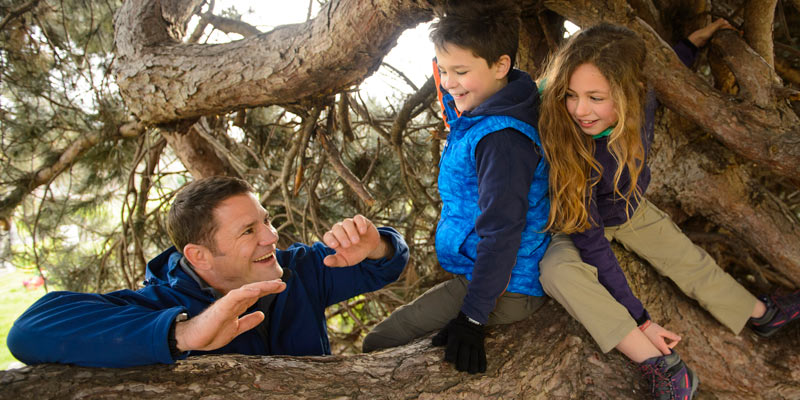Family Traveller magazine editor, Jane Anderson, met up with adventurer and TV presenter Steve Backshall, to discuss how kids can get wild in the great outdoors. Here’s what the famous wildlife presenter had to say:
“It’s essential that we get kids into the outdoors and the wild! There are so many modern ills that we can trace back to us loosing our connection with nature. Whether it’s simple things like a lack of oxygen. Whether it’s kids not being as fit or active, whether it’s obesity, or whether it’s the massive increase in allergies. Things that in all probability could be down to the fact that we lead such artificial lives nowadays.
But the kids I see genuinely have that enthusiasm for the wild. And they have that connection to the outdoors. And they are fresh faced, bright eyed and full of enthusiasm. I am not someone that has agrees with this message we’re sold of kids who are plugged into their iPhones and tablets. I don’t see that. I get to see kids who love life and have endless energy and enthusiasm. It’s infectious to be around and I can see that it works.
I think its essential that we rediscover where we came from. It’s six million years since our common ancestor were the chimpanzees, and it’s been just a couple of decades that we’ve led these sedentary indoor lives. Our bodies are not equipped for it. And if we forget this connection that we have to outside world it’s going to be at the detriment to us personally and as a society as well.

Outdoor retailer, Mountain Warehouse, approached me about a year and a half ago to create a range of kids clothes. I’ve had a range of different projects over the last five years that have been about getting kids outside and key to that is that kids have clothing that is both functional AND affordable. It is ludicrous how much outdoor clothing costs. A top of the range Gore Tex jacket can be £600. Who has that kind of money for growing kids?
There is nothing more guaranteed to put kids off the outdoors than a day spent outside sopping, soaking wet, uncomfortable and miserable. But if you’re a parent that has three kids that are growing fast, there’s no way you can kit them out in stuff that’s going to cost hundreds of pounds. And that is a real, definable barrier to them doing the kind of things I want them to be doing. So this collaboration with Mountain Warehouse is a natural link for me. And the people who I’ve met at Mountain Warehouse have been so genuine. There is more than corporate spiel behind the message.”
Take a sneak peek at Steve Backshall’s new kids range
[soliloquy slug="steve-backshall-mountain-warehouse"]
Steve Backshall’s favourite UK coastal spots for kids to get wild!
1. Pembrokeshire
I adore Pembrokeshire. I do a lot of sea kayaking and climbing round there. Every time I go back, despite the fact I’ve been going there my entire life, I go Wow this place is awesome! How beautiful those little bays are with those rock faces that just drop down into the sea. Perfect for families.
2. The Western Isles of Scotland
Probably one of the most beautiful places in the WHOLE world without question. It’s the closest thing we have to Alaska. Extraordinary islands like Skye, Rum Eigg and Mull. They have breathtaking beauty. Best place for wildlife in the UK.
3. Cornwall
I have to say that because my fiancé is from Penzance, Cornwall! All around Lands End is stunning coastline that just takes your breath away. Stunning for birds.
4. Northumberland
The Farne Islands are really special. In the summer, the life there just takes your breath away. And it’s wild and lashed by wind and waves. Really rugged and spectacular.
5. The Jurassic Coast, Dorset
Although tamer, its beautiful and the home of palaeontology and fossil finding and you’ve got spots like Lulworth Cove and Durdle Door and the white cliffs that are just England to its core. For a family, there is so much to do.
Steve Backshall launches a children’s outdoor clothing range for Mountain Warehouse, available in stores and online now. From ages five to 13 years the spring/summer limited edition collection features a range of colourful t-shirts and shorts with wild animals. Prices vary from £9.99 to £69.99. See the collection here: mountainwarehouse.com

